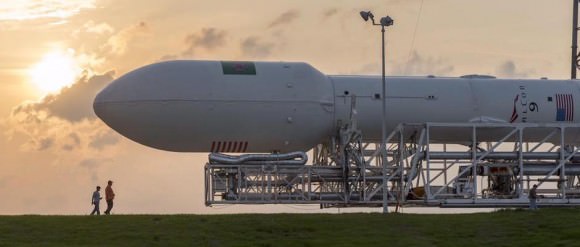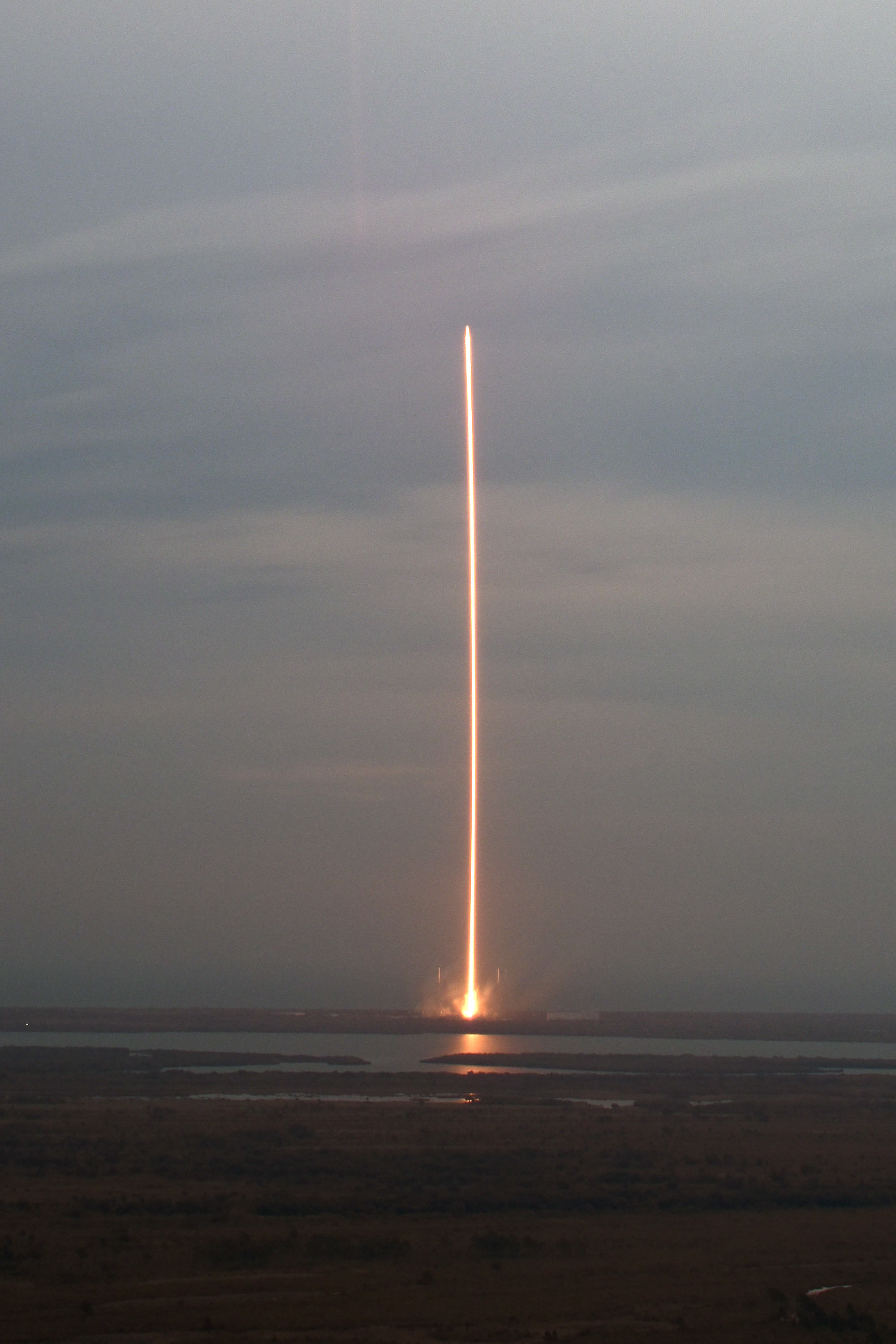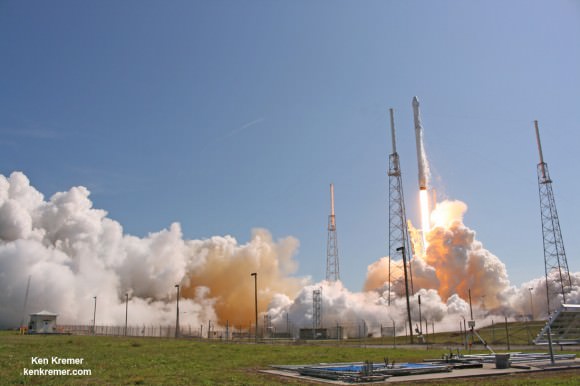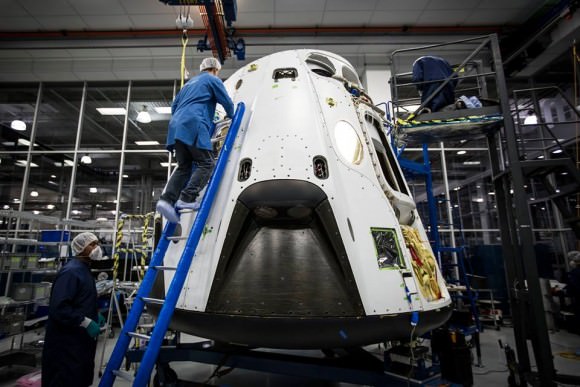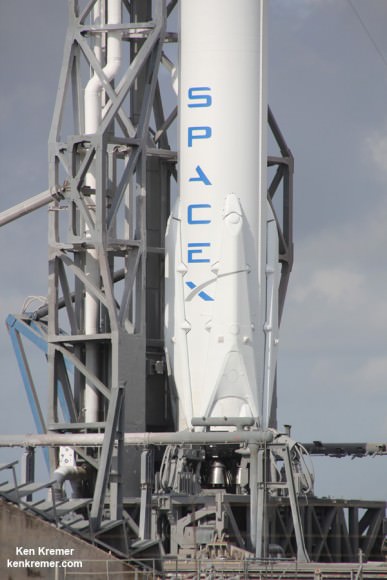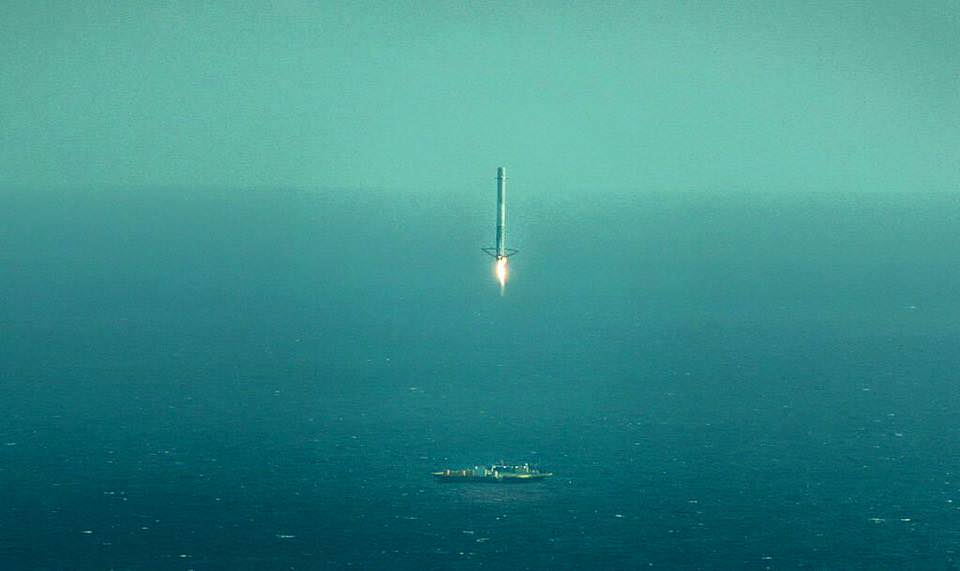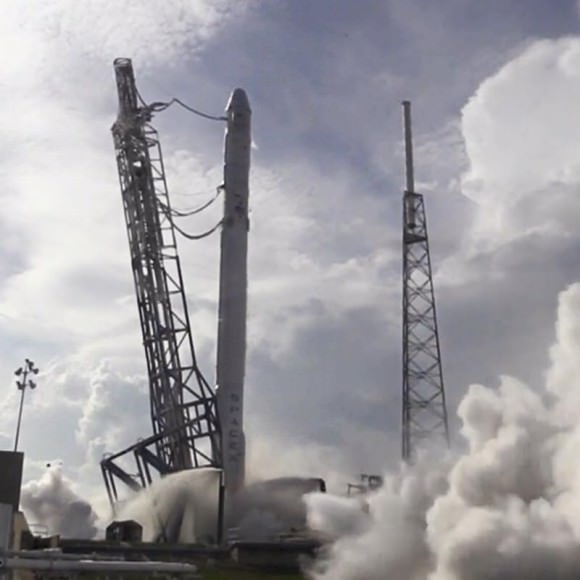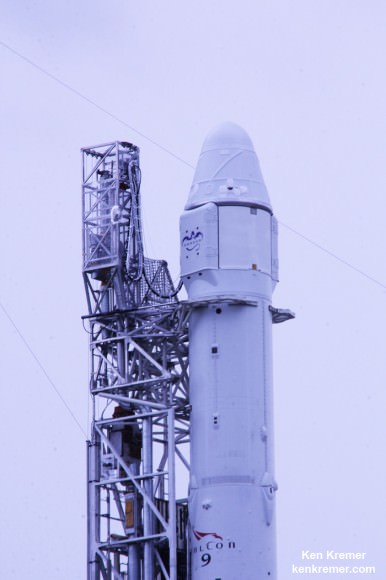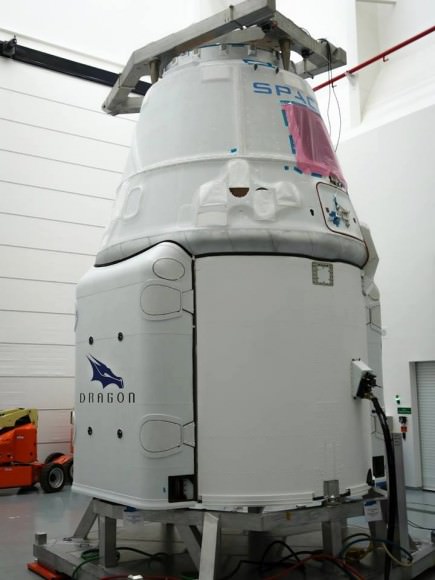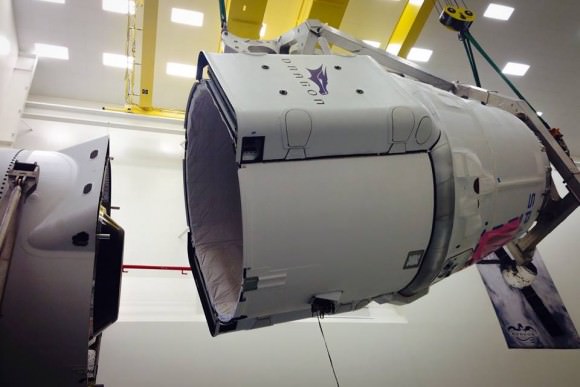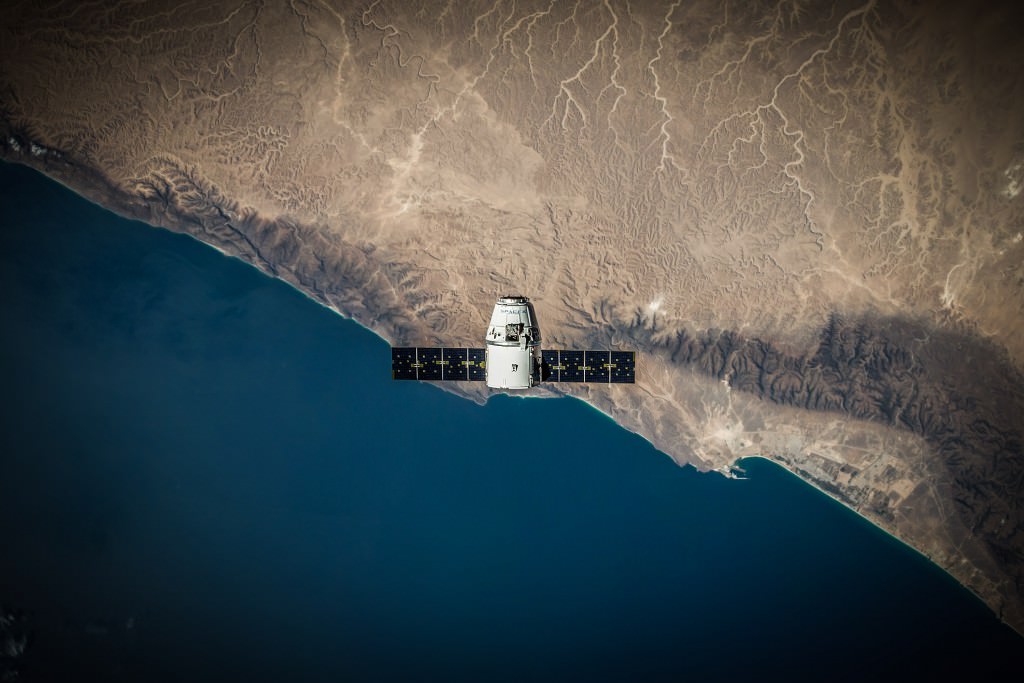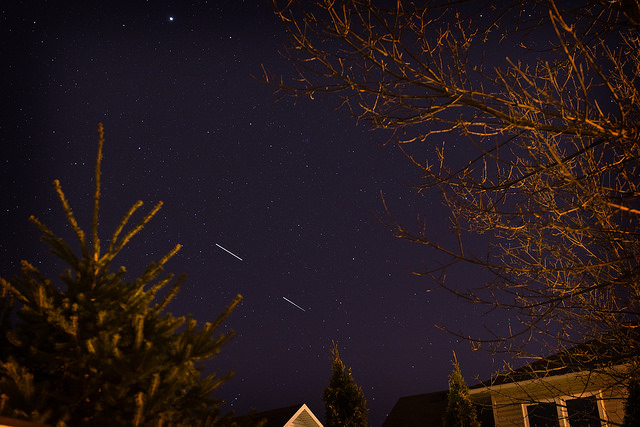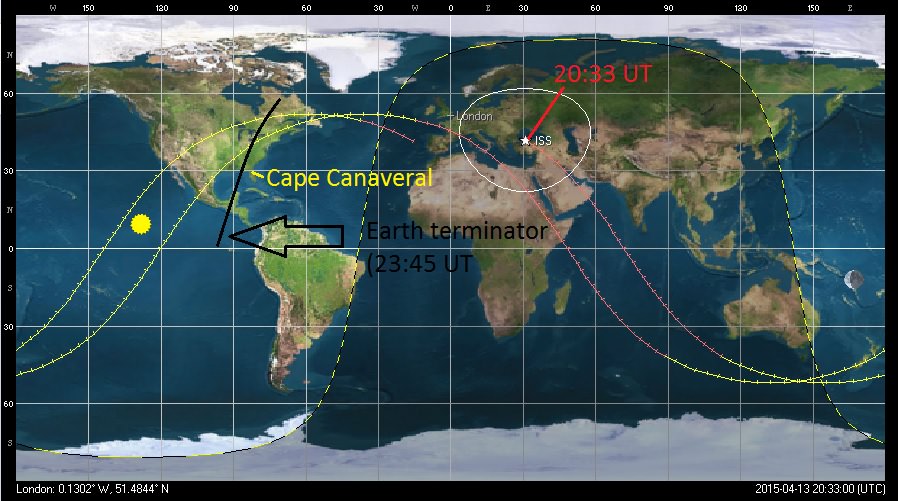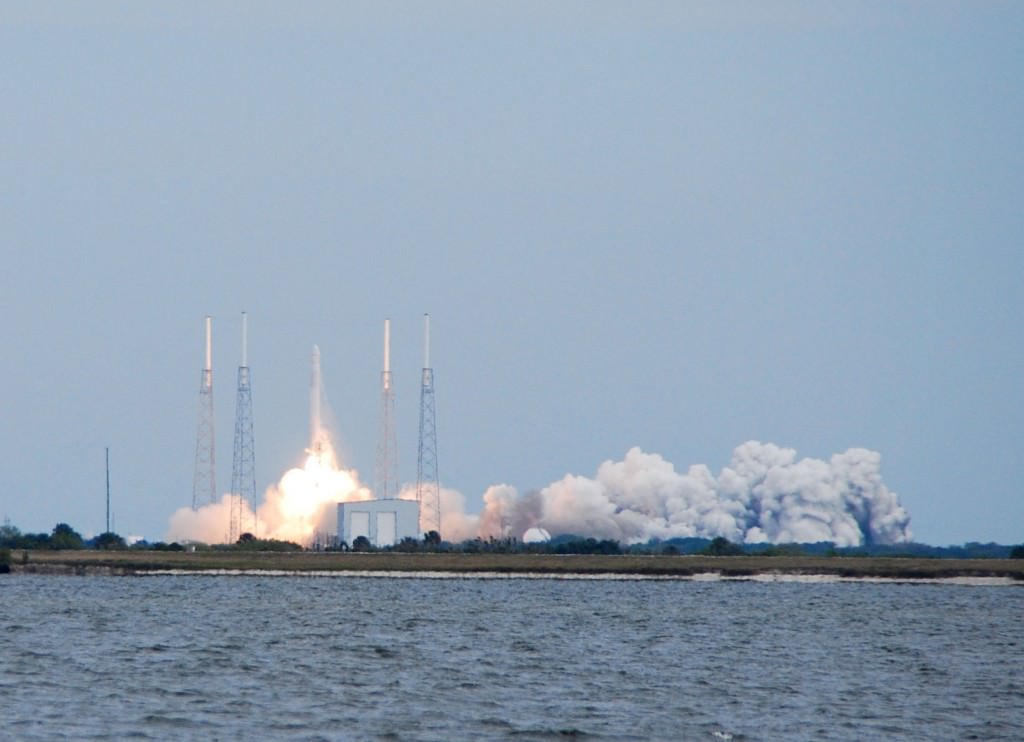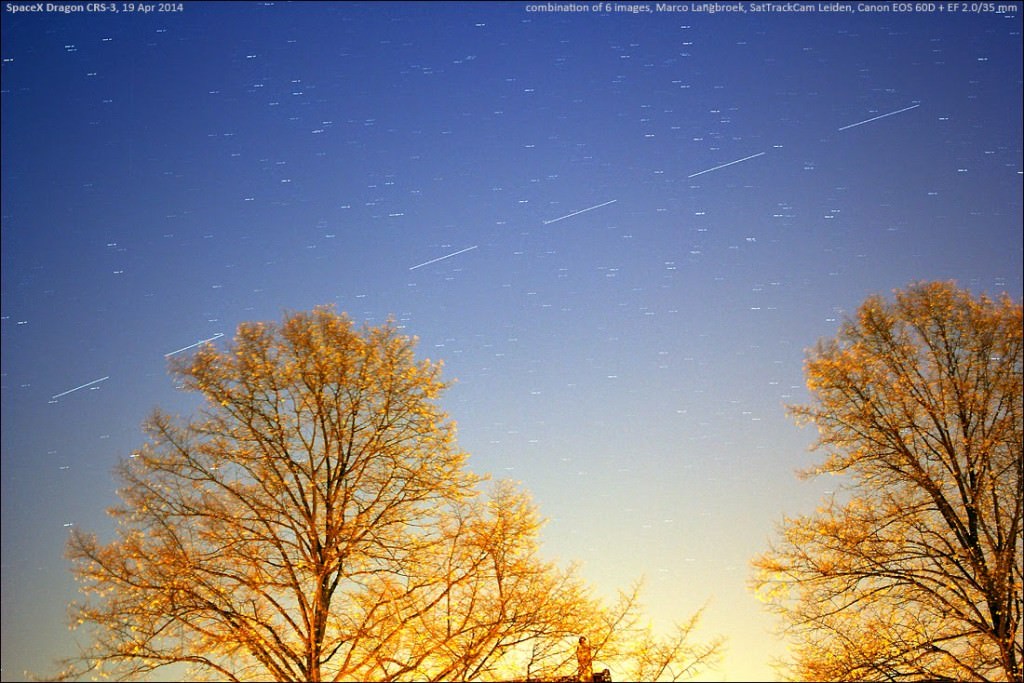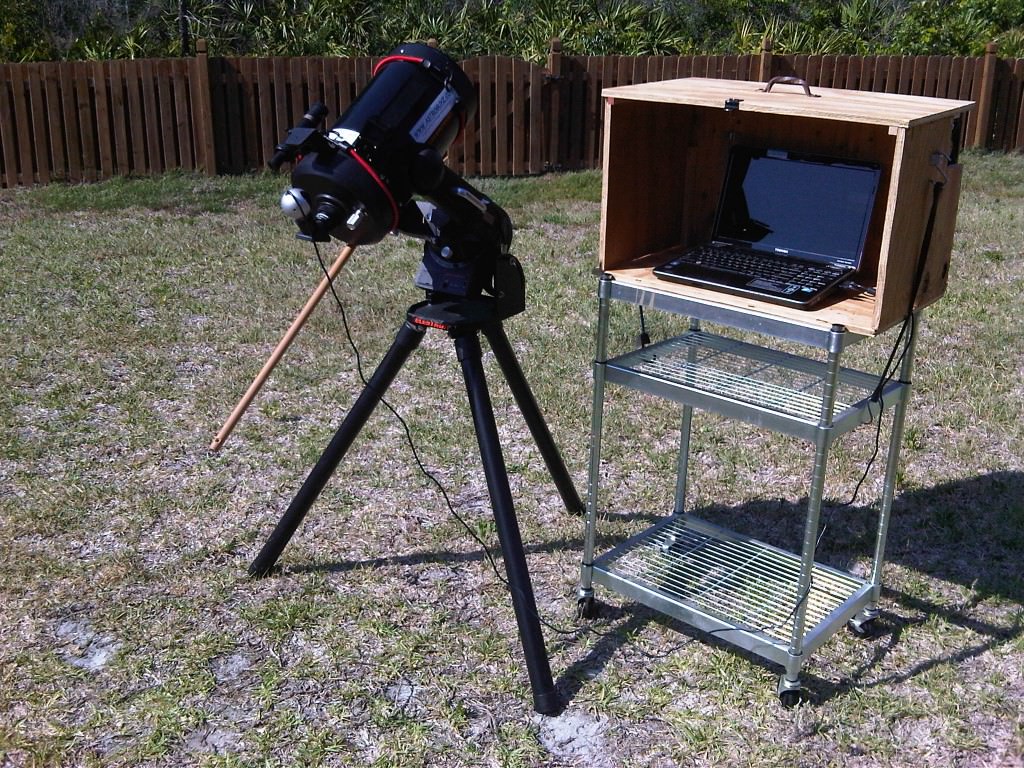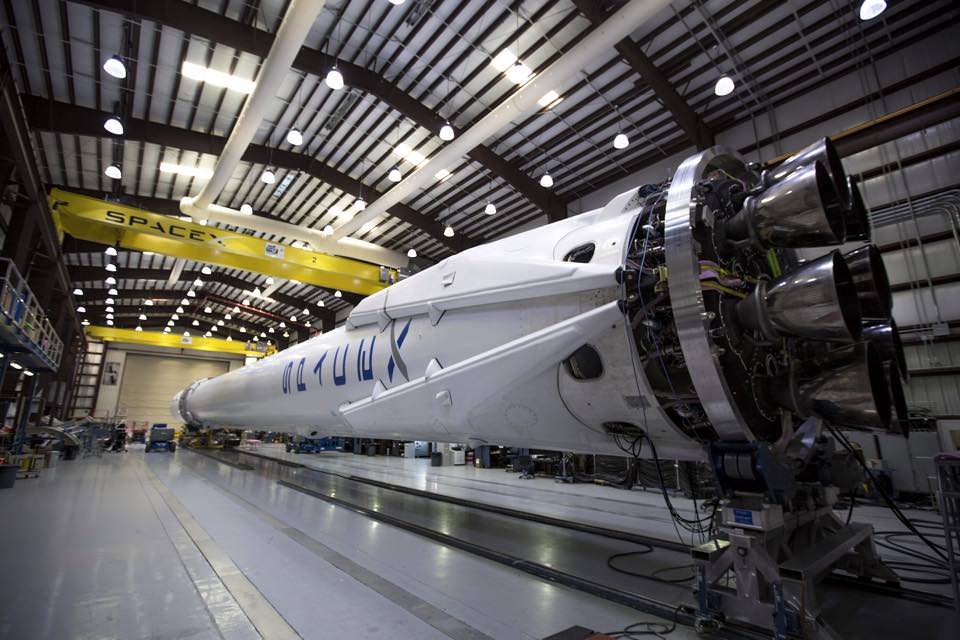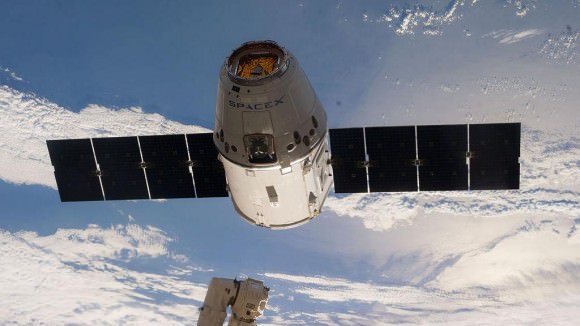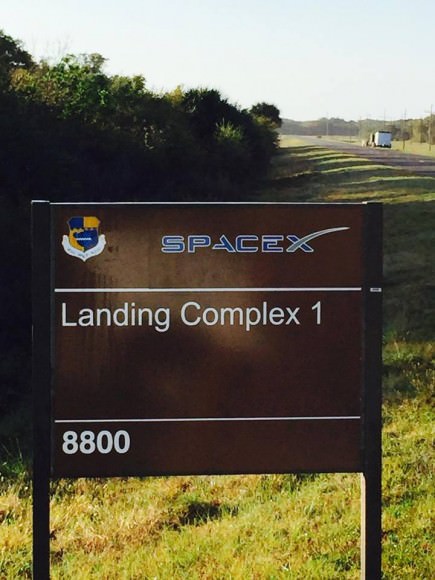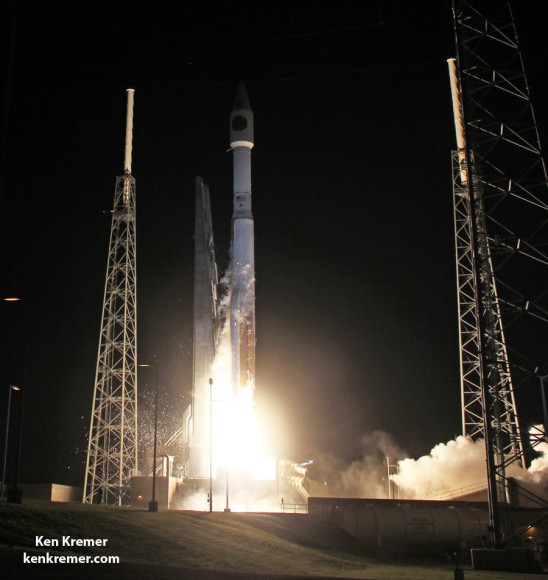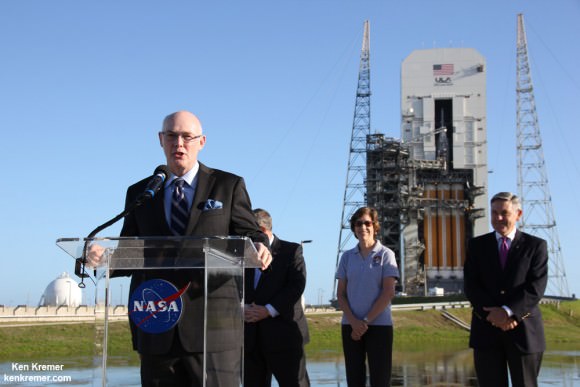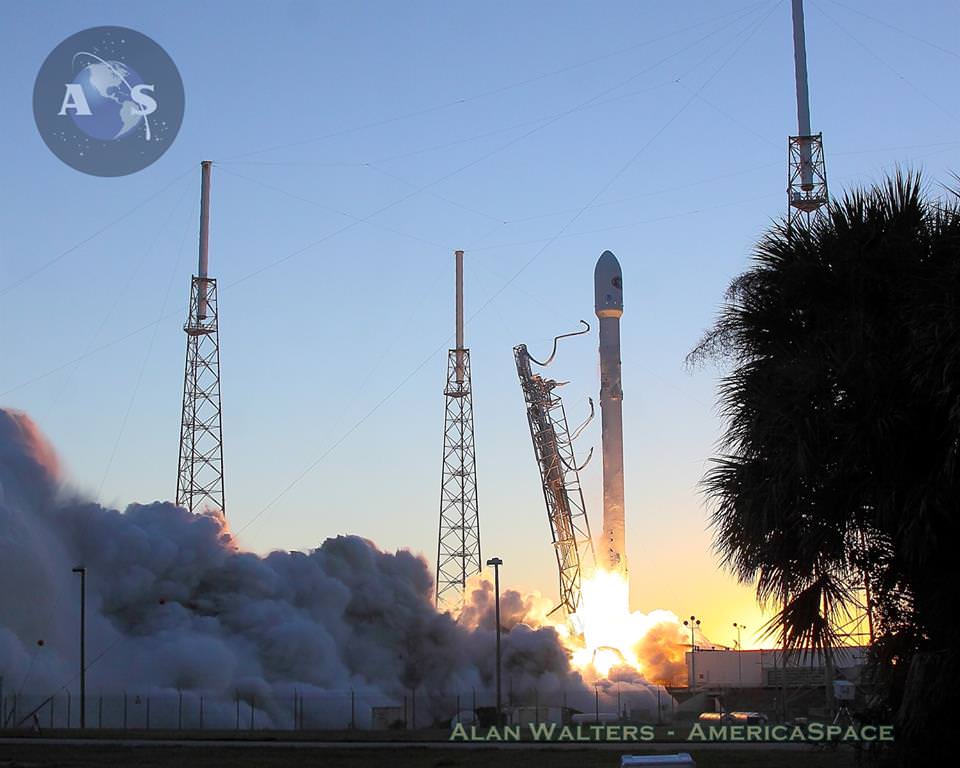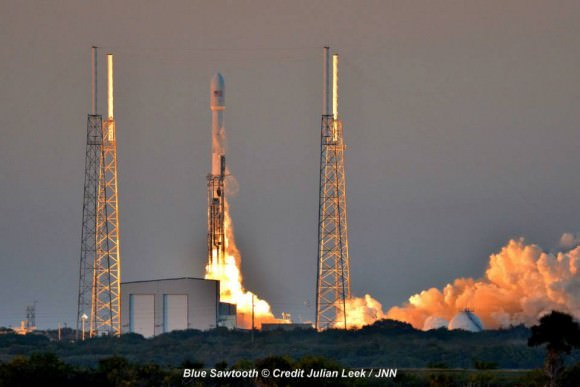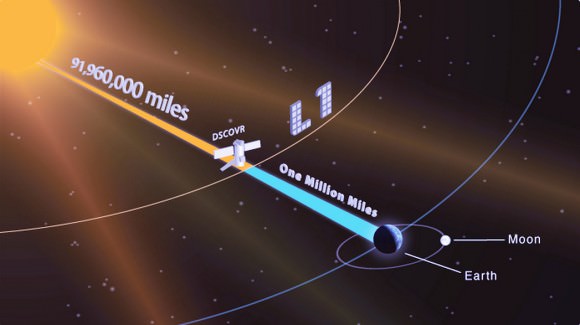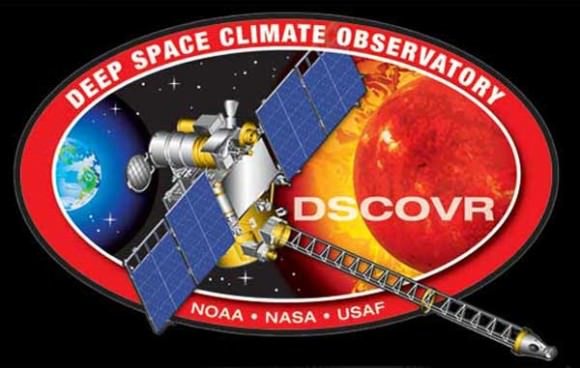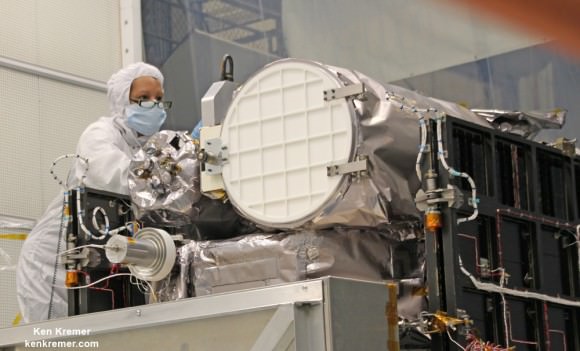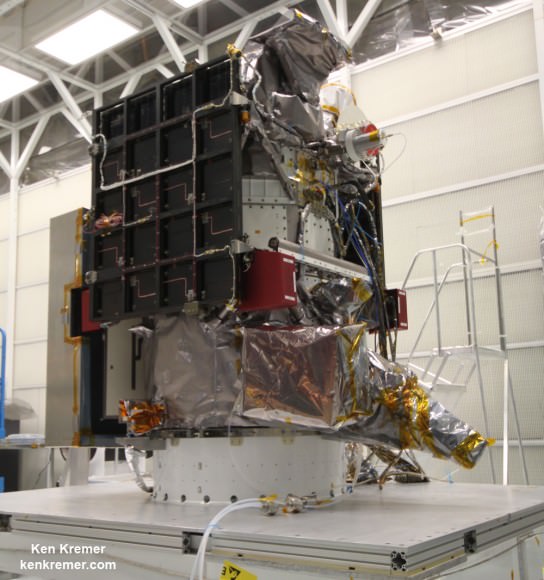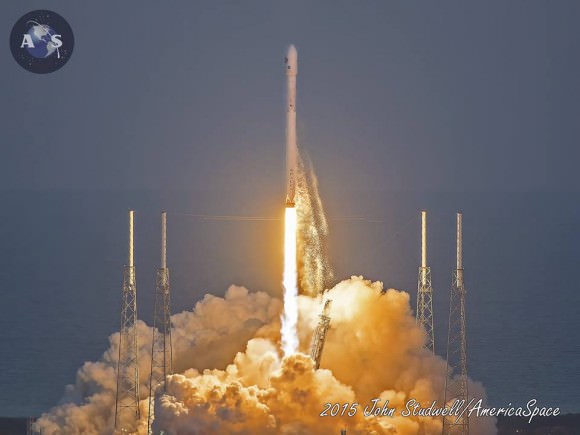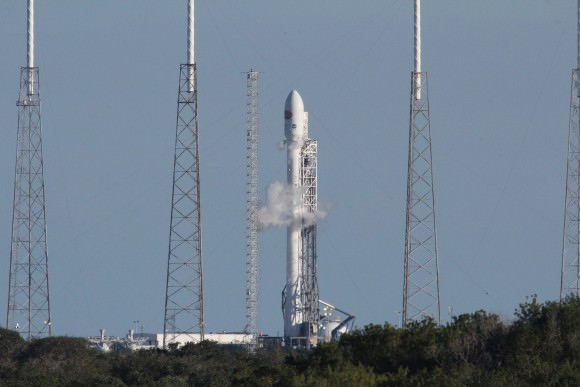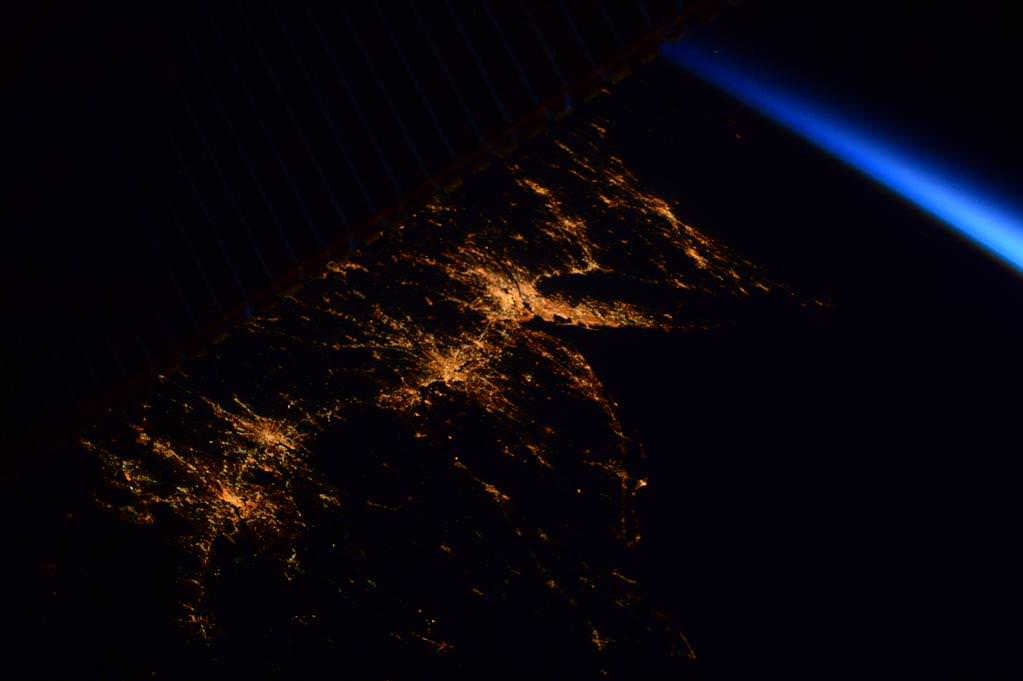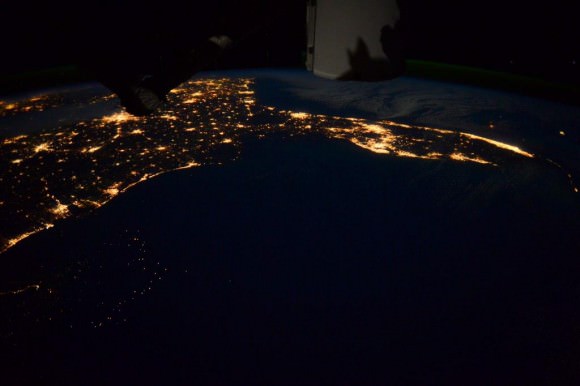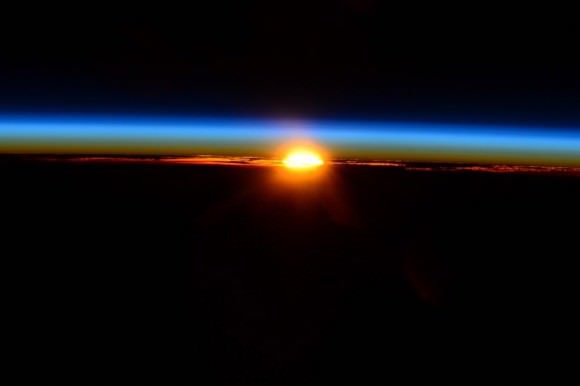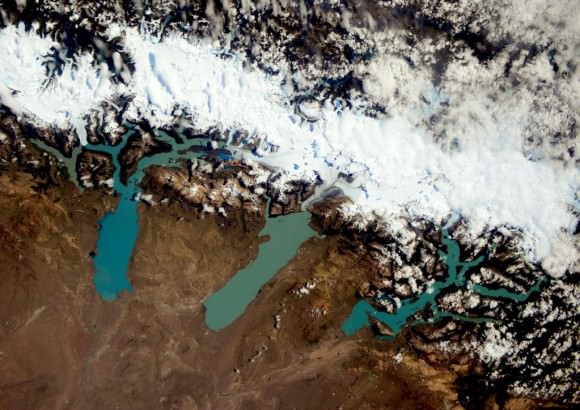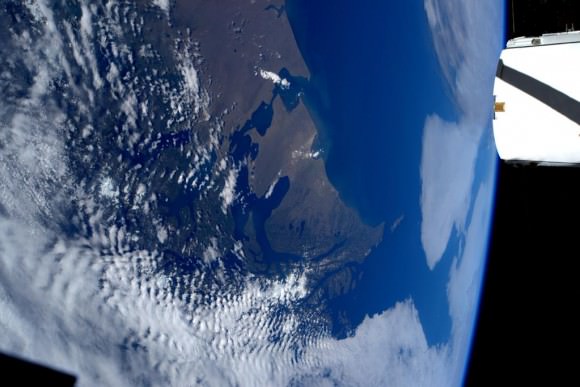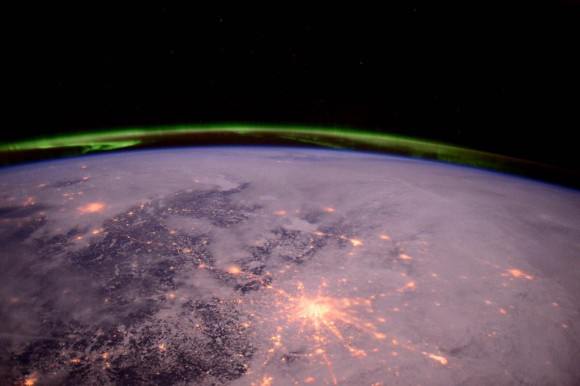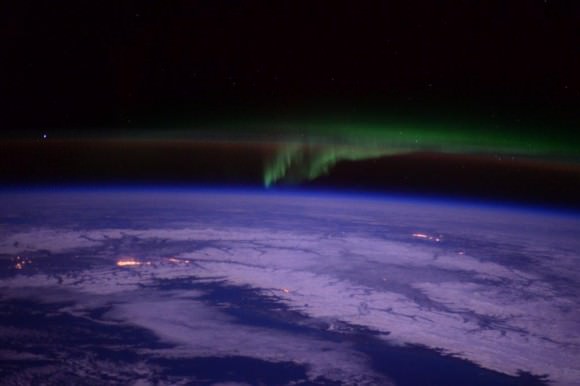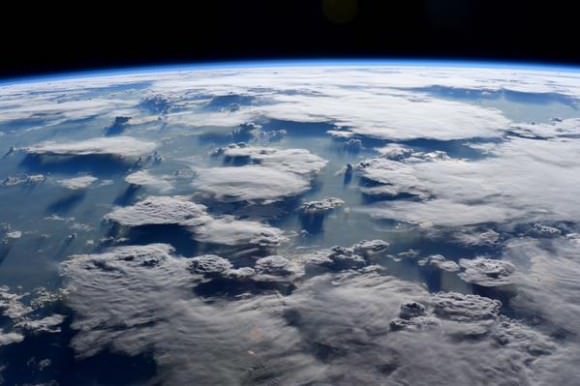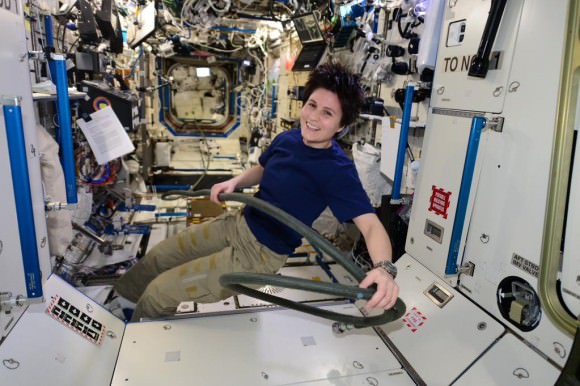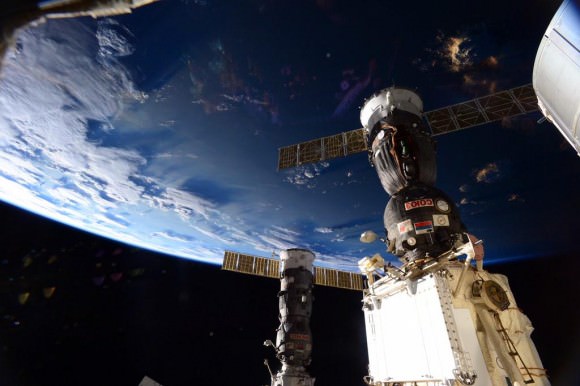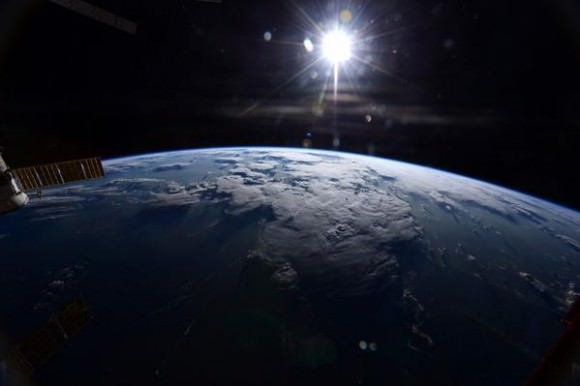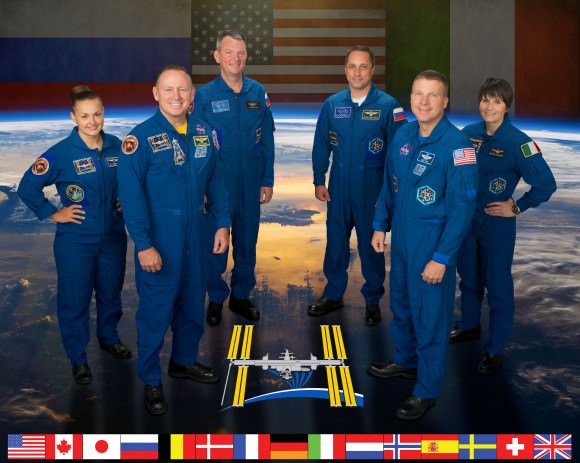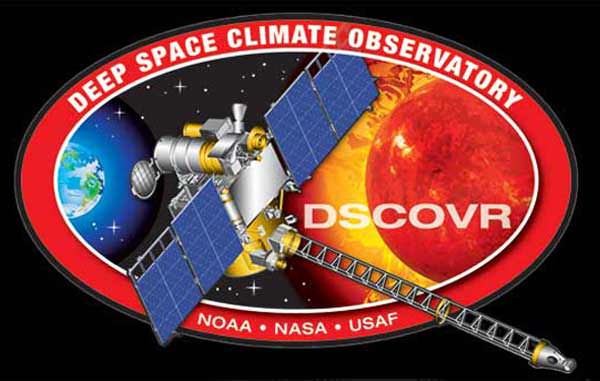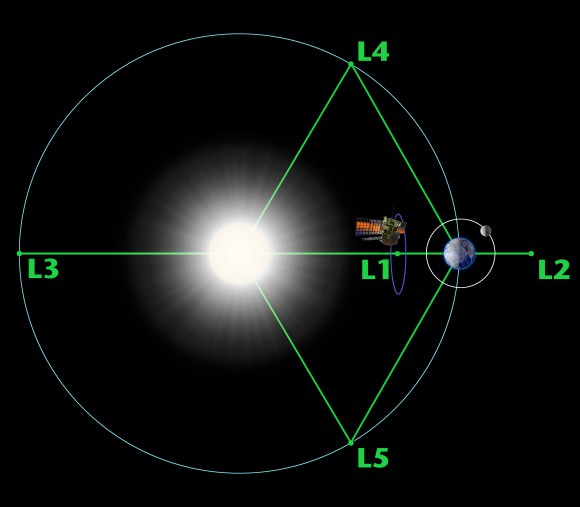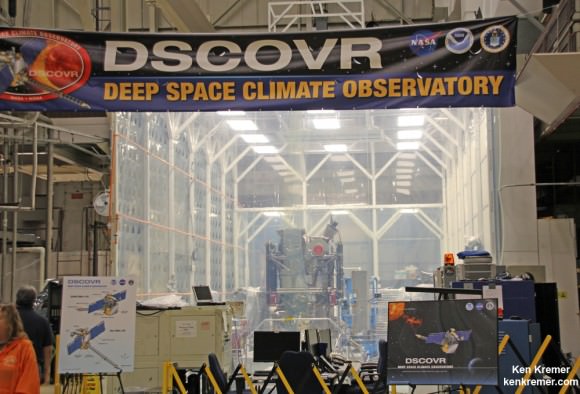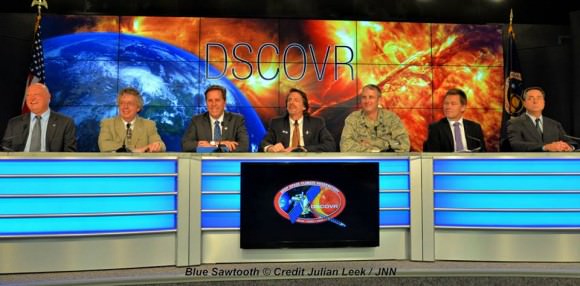SpaceX set a new internal record pace for time between blastoffs of their workhorse Falcon 9 rocket with Monday’s spectacular dusky liftoff of Turkmenistan’s first satellite into heavily overcast skies that has cleared the path ahead for a busy manifest of critical flights starting with a critical pad abort test for NASA just a week from today.
After a 49 minute delay due to grim weather conditions, weather officials finally found a “window in the clouds” that permitted the Falcon 9 to launch on Monday, April 27, 2015 at 7:03pm EDT (2303 GMT).
The launch took place just 13 days after successfully launching the SpaceX Dragon CRS-6 resupply freighter to the International Space Station (ISS) for NASA on April 14.
Overall this launch marked Falcon 9’s fifth launch in four months and second in 13 days, besting SpaceX’s previous turnaround record by one day.
But it was touch and go all afternoon, when two weather rules related to cloudy conditions violated the launch commit criteria and forced a no go from the originally planned 6:14 liftoff time.
The situation was not at all promising when the weather officer announced “NO GO” during the prelaunch poll that resulted in a recycle to the T minus 20 minute mark with seemingly little prospect of a launch. Then all of a sudden, conditions improved and the count was resumed and “wet off without a hitch” said SpaceX.
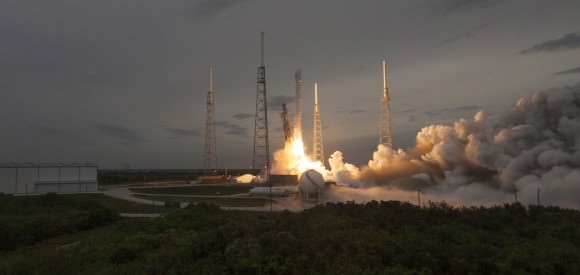
The 224 foot tall SpaceX Falcon 9 launched on a commercial mission for Thales Alenia Space carrying the first ever communications satellite for the nation of Turkmenistan.
The TurkmenÄlem52E/MonacoSat satellite was built by Thales Alenia Space.
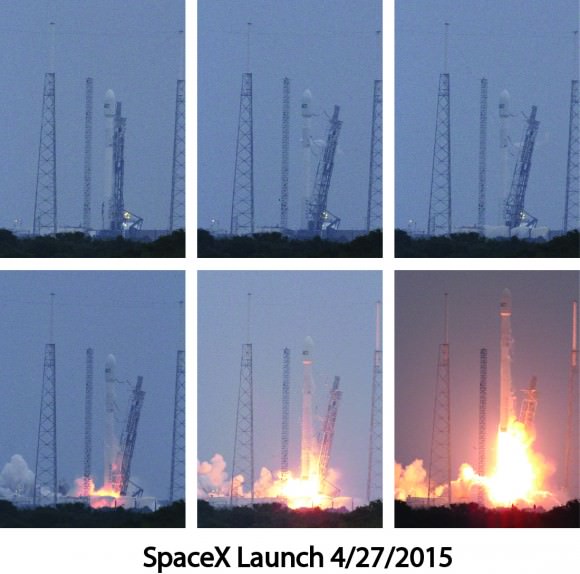
The 14 story Falcon 9 first stage is powered by 9 Merlin 1D engines that generate about 1.3 million pounds of thrust.
The Falcon 9’s first and second stages separated three minutes after launch. The second stage fired for six minutes for its first burn to reach the initial parking orbit. It then reignited twenty-six minutes into flight, to completed a one-minute burn.
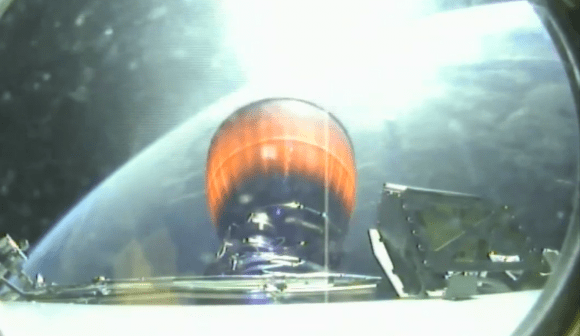
The launch delivered the 10,375-pound (4500 kg) TurkmenÄlem52E/MonacoSat satellite to a geosynchronous transfer orbit. The satellite was deployed as planned approximately 32 minutes after liftoff.
Launches are never easy, as exemplified by a post launch tweet from SpaceX CEO Elon Musk after the satellite was deployed from the second stage.
‘Rocket launch good, satellite in geo transfer orbit. Still so damn intense. Looking fwd to it feeling normal one day,” tweeted Musk.
Despite the launch of Turkmenistan’s first communications satellite, the country is conducting a war on satellite dishes to receive the signals according to Human Rights Watch.
“Authorities in Turkmenistan are forcing residents to dismantle privately owned satellite dishes,” Human Rights Watch said in a statement on April 24. “A move that unjustifiably interferes with the right to receive and impart information and ideas, this serves to further isolate people in Turkmenistan, one of the most closed and repressive countries in the world, from independent sources of news and information.”
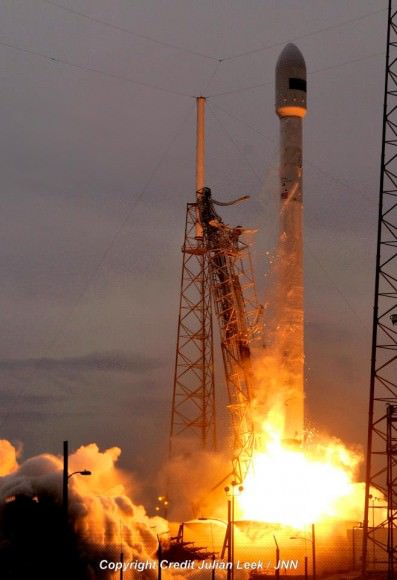
Just 1 week from today on May 5, SpaceX plans a pad abort test for NASA that is critical for the timely development of the human rated Dragon that NASA is counting on to restore the US capability to launch astronauts from US soil to the space station.
The next Falcon 9 launch is slated for mid-June carrying the CRS-7 Dragon cargo ship on a NASA mission to the ISS.
There was no attempt to soft land the Falcon 9 first stage during the April 27 launch. Due to the heavy weight of the TurkmenÄlem52E/MonacoSat satellite there was not enough residual fuel for a landing attempt on SpaceX’s ocean going barge.
The next landing attempt is set for the CRS-7 mission.
Stay tuned here for Ken’s continuing Earth and planetary science and human spaceflight news.
